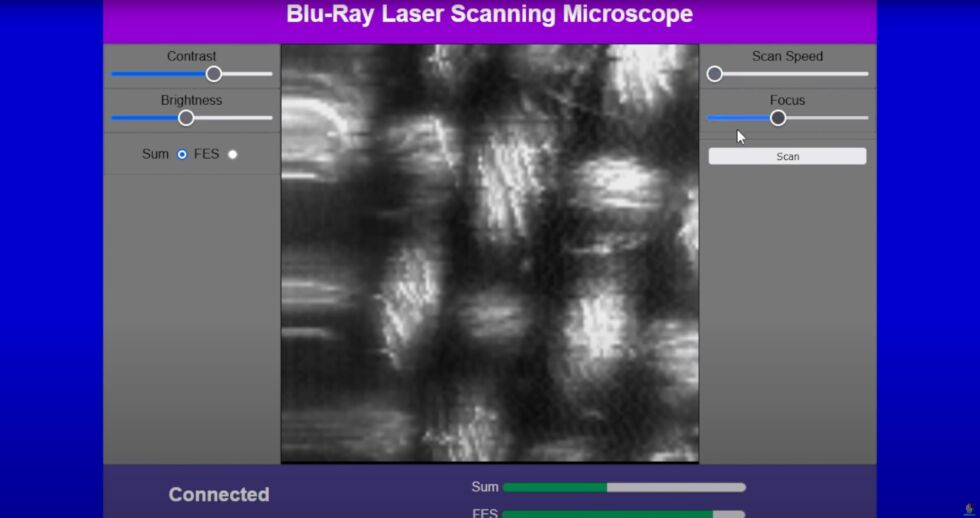Blu-rays have never been able to completely take the throne of DVDs. Recent estimates, based on data collected by Nielsen VideoScan and MediaPlayNews, show that as of Q2 2022, DVDs still control 51.4 percent of the market share, while Blu-rays remain at 48.6 percent.
It doesn’t matter which format has the largest slice, as the physical media pie is already shrinking. So your Blu-ray player may be starting to become a dust-gathering ornament in your home theater. But that doesn’t change the fact that it can still work. We’re sure you’ll agree with us when you see what a clever hacker does with it.
A YouTuber named Doctor Volt detailed his two-part journey in turning a Samsung BD-J5900 Blu-ray player into a laser scanning microscope.
One of the primary advantages of laser scanning microscopes over optical ones is that they can magnify 1,500 times. Doctor Volt says he isn’t sure about the magnification of DY microscopes, but tells one commenter that “it can resolve structures of about 5 micrometres.”
Doctor Volt’s system takes advantage of the fact that Blu-ray players and laser scanning microscopes work alike. As a quick simplification, Blu-ray players beam lasers onto Blu-ray discs and the optical receiver unit can read sensors 1 or 0, depending on how strongly the light is reflected back onto the player’s disc.
However, since the sensors in the optical receiver unit are not actually binary and can measure varying amounts of reflected light, Blu-ray players can be turned into laser scanning microscopes.
For his project, Doctor Volt used various parts of the Samsung Blu-ray player, including a laser diode, stepper motor to move the laser, optical receiver unit and focusing coil. He also says he uses additional plastic parts for the scan bed.
According to Doctor Volt, the microscope uses 16,129 measurements to create an image of 127 x 127 pixels. The image below shows it scaled to 512×512.
